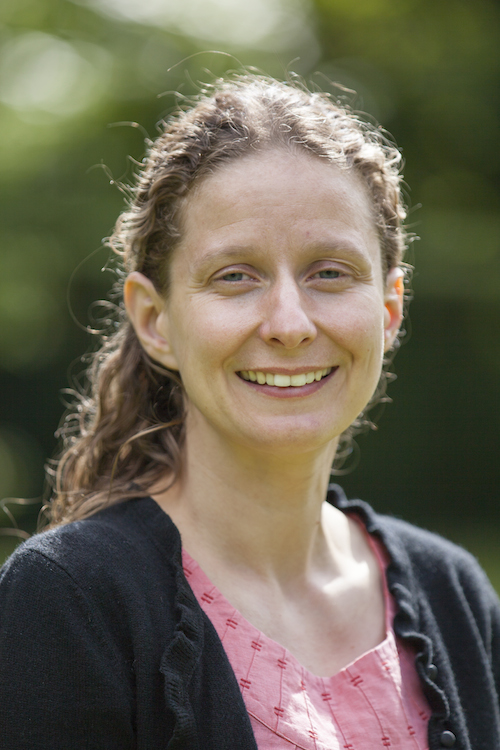
Blue morpho butterfly, by Vera Kratochvil, public domain
When the physicist Russell Cowburn reached the end of his PhD studies, he had a choice to make. Having become a Christian at the age of eighteen, he thought deciding between a job in science or the church was choosing between the spiritual and the material. Several decades into his career as a scientist, he isn’t quite so sure difference between the two options was as stark as he thought at the time. Cowburn explained his reasoning in a lecture at the recent Faraday summer course, which I will summarise in my own words.
Within a Christian theological framework, God transcends the world – he is greater than, and independent of it. As Psalm 90 says, “Before the mountains were born or you brought forth the whole world, from everlasting to everlasting you are God.” God is also immanent – he chooses to remain in the world and is somehow intimately involved in its physical interactions. “You give life to everything…” (Nehemiah chapter 9), and “He is before all things, and in him all things hold together” (Colossians chapter 1).
There are warnings from the Bible not to worry about material things. “Do not worry about your life, what you will eat or drink; or about your body, what you will wear. Is not life more than food, and the body more than clothes?” (Matt 9:25). On the other hand there are warnings not to reject material things, because adopting a harsh asceticism will not necessarily help us to become more spiritual (Colossians 2:20-23).
One the other hand, the Bible invites us to learn about God from the physical world. For example, Psalm 119 describes a triangular relationship between God’s written word, the physical world, and God’s faithfulness. Each reinforces the other, and all three endure. “Your word, Lord, is eternal; it stands firm in the heavens. Your faithfulness continues through all generations; you established the earth, and it endures. Your laws endure to this day, for all things serve you” (Ps 119: 89-91).
So for a Christian, the scientific method reflects God’s faithfulness and unchanging nature. As Einstein wrote, “the eternal mystery of the world is its comprehensibility…The fact that it is comprehensible is a miracle” (Physics & Reality, J. Franklin Inst. 221, 349 (1936)). Psalm 19 describes how a discipline like astronomy can reveal something of God. “The heavens declare the glory of God; the skies proclaim the work of his hands. Day after day they pour forth speech; night after night they reveal knowledge. They have no speech, they use no words; no sound is heard from them. Yet their voice goes out into all the earth, their words to the ends of the world.”
Bringing all this together, the Belgic confession, which was written by protestant theologians in the sixteenth century, underlines these points. “We know [God] by two means: first, by the creation, preservation and government of the universe; which is before our eyes as a most elegant book, wherein all creatures, great and small, are as so many characters leading us to contemplate the invisible things of God, namely, his power and divinity, as the apostle Paul saith, Romans 1:20. All which things are sufficient to convince men, and leave them without excuse. Secondly, he makes himself more clearly and fully known to us by his holy and divine Word, that is to say, as far as is necessary for us to know in this life, to his glory and our salvation” (Article 2).
Or if as the Westminster shorter catechism says, the “chief end of man is to glorify God and enjoy him forever”, then surely studying the physical side of creation is a large part of that task? Russell studies things at the nanometre scale, which includes anything smaller than a bacterium. Using huge machines and techniques like atomic force microscopy (detecting single atoms with the help of a tiny stylus and a laser beam), physicists like Russell have been able to study materials like bucky balls, carbon nanotubes, and graphene.
The animal kingdom was turning out nano-wonders long before we had even discovered the very basics of science. The morpho butterfly’s iridescent wings are coloured not by pigment, but by banks of nanostructures that reflect blue light. The energy in living things comes from a molecule called ATP, which is made by a nano-machine that includes a rotor, complete with bearings. So the entire world has been running on nanotech from the very beginning. This makes Russell turn to Psalm 139. “I praise you because I am fearfully and wonderfully made; your works are wonderful, I know that full well.”
One book that Russell relates to as a nanotechnologist is “Flatland”. This text was originally intended as a satire on the Victorian class system, but has been adopted by some people as a way to describe the impossibility of imagining God. How can a two-dimensional being encounter a three-dimensional person? The whole scenario is mind-boggling.
Russell and his team have constructed their own two-dimensional worlds by making layers of materials that are a single atom thick. The sheets are fairly small in size, but comparing their thickness to their width, it is like having a piece of paper one kilometre square, or a swimming pool covering the entire earth. Essentially, these are two-dimensional flatlands. This system has made it possible to understand the effects of asymmetry in atoms in a new way. To express his wonder at this discovery, Russell goes to Proverbs chapter 25. “It is the glory of God to conceal a matter; to search out a matter is the glory of kings.”
So having thought he was to choose between the material and the spiritual, Russell has found that he does not have to reject the one in order to study the other. He has been able to flourish as a scientist, while growing in his faith as a Christian. The great wonder for him is being able to study both of the major events in history – the creation of the world and the coming of Jesus as Messiah to save it.
The full recording of Russell Cowburn’s talk will be posted on the Faraday Institute website in the coming weeks.

© Faraday Institute
Ruth Bancewicz is a Senior Research Associate at The Faraday Institute for Science and Religion, where she works on the positive interaction between science and faith. After studying Genetics at Aberdeen University, she completed a PhD at Edinburgh University. She spent two years as a part-time postdoctoral researcher at the Wellcome Trust Centre for Cell Biology at Edinburgh University, while also working as the Development Officer for Christians in Science. Ruth arrived at The Faraday Institute in 2006, and is currently a trustee of Christians in Science.




